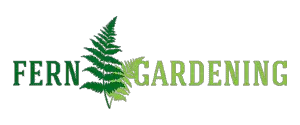Ferns are commonly used in gardening to add texture to a border, or a splash of color to a gloomy corner that other plants struggle to thrive in. Ferns also make excellent houseplants, being easy to maintain and providing elegant beauty all year round. They are highly versatile plants, and can be grown in different environments, including pots and containers that can help add more content to smaller gardens, decks and porches.
But, what if you want to be a bit more ambitious?
Ferns have their own unique appeal, and have such diversity in appearance that whole areas of the garden can be dedicated to them. In Victorian England ferneries were fashionable through the nineteenth century as fern madness gripped the country. This led to the appearance of grottos and glasshouses in estates across the land, as competitive growers showed off the latest and rarest specimens in all their glory.
While that mania has passed, the appeal of ferns has never faded completely. They remain fascinating and bewitching plants that deserve recognition in their own right. Here are some ideas about how to use ferns in ways that showcase them at their best.
1. Water features: fern falls
Ferns naturally like moist, humid environments. That is why they are found in nature alongside rivers and streams, especially where the ground is rocky or shaded by trees, where flowering plants would struggle.
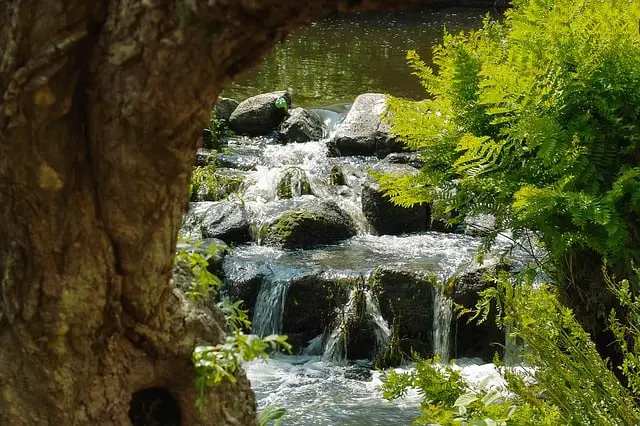
This environment can be recreated in the garden. Where space permits, a naturalistic water feature can be created with flowing water over stone and shingle creating small water falls that are beautiful to both the eye and ear. Such small falls need a planting scheme that softens that hard edges of the stone, and “feels” natural – as though a real brook has been happened upon at the end of the garden.
Ferns are the perfect plant for this goal. The cascade of water will be ideal for ferns to thrive, and they can survive on a thin layer of soil amongst the rocks and stones. The texture and color of the fronds will complement the attraction of the water, and break up the hard edges, providing a transition from stream to garden that has the right aesthetic quality. Somehow, it feels right at an instinctive level to see ferns on the fringes of a stream.
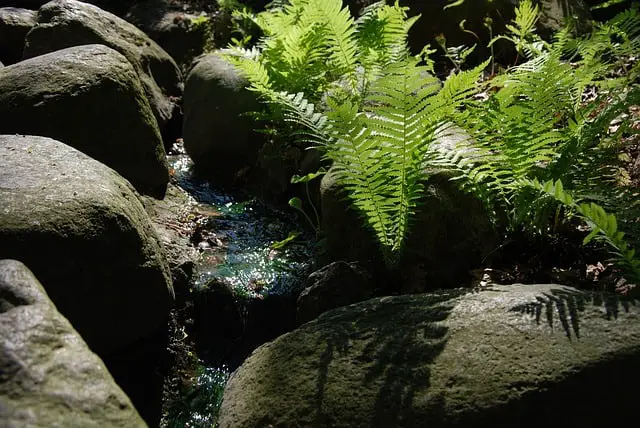
This principle holds for more formal water features too. Even with straight edges, tiled channels, or sculptural water features, ferns provide a visual complement that just feels right as a transition between hard landscaping and the softer borders of the garden.
2. A rockery: barren beauty
Leading on from the previous idea, ferns will roam over rocks even in the absence of water, and can find purchase in the shallowest soils and the unlikeliest of nooks and crannies.

Ferns and rocks just seem to go together, and so a rockery is a great foundation for a fern garden. By varying the varieties of ferns, you can use the size and scale in a graded way to provide layers of interest as the eye moves up amongst the tumble of rocks.
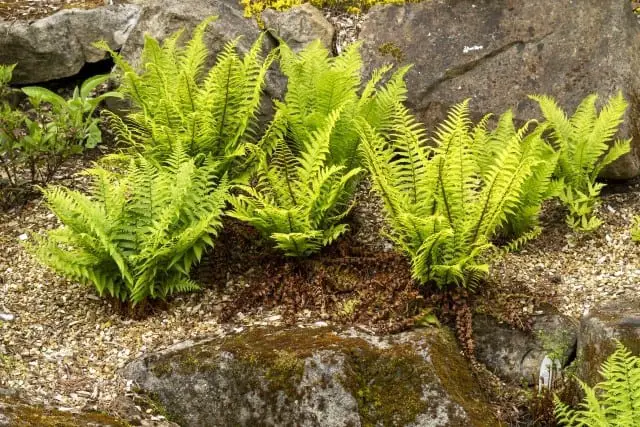
Some fern varieties particularly lend themselves to rock gardens. The lip ferns grow well in full sun, and can tolerate shallow soil and dry periods – making them ideal for the higher and more exposed parts of the rockery.
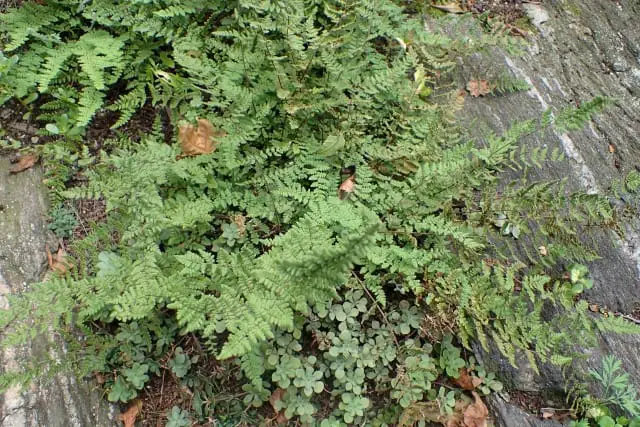
Hairy lip fern
- Cheilanthes lanosa
- Evergreen
- Full sun
- Height: up to 0.5 m
- Soil: acid, neutral or alkaline. Moist, well-drained.
Image credit: Krzysztof Ziarnek
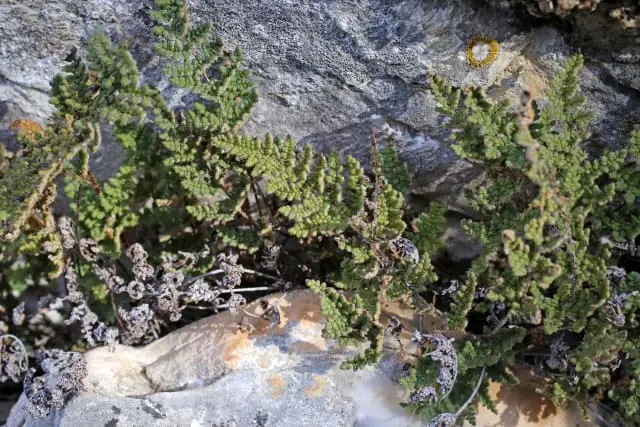
Woolly lip fern
- Cheilanthes tomentosa
- Evergreen
- Full sun
- Height: up to 0.5 m
- Soil: acid or neutral. Moist, well-drained.
For a real visual statement, stone walls can be peppered with ferns in crevices and cracks. This can soften the wall, and help make it seem older and more established, helping it to feel as though the hard landscaping has been partly absorbed into the garden and captured by nature.
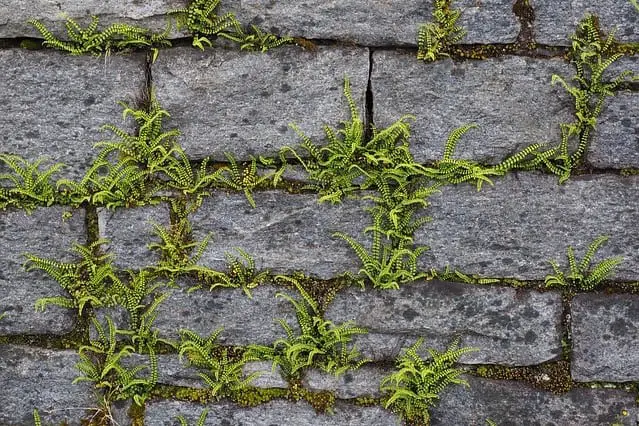
3. A stumpery: the natural look of wood
The other natural environment that ferns dominate are woodlands. Here, the ferns thrive in the dappled light of the undergrowth, but the intimacy of trees and ferns can be even closer than that.
Some species of ferns are “epiphytes” or air plants – that is, they grow on the surface of other plants. A classic example is the staghorn fern, but many other varieties can live in this way too.
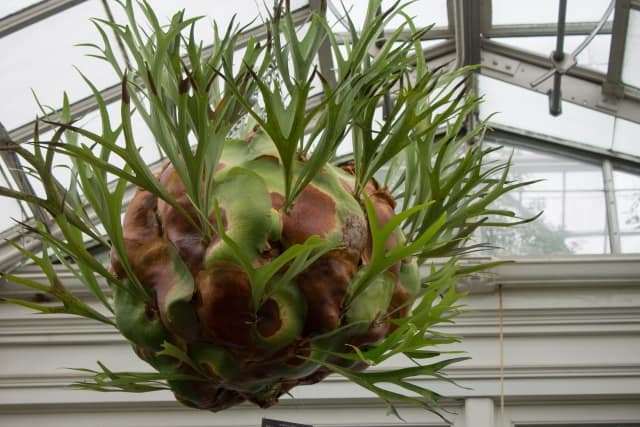
Staghorn fern
- Platycerium bifurcatum
- Evergreen
- Prefers partial shade
- Height: up to 1 m
- Epiphytic (but can be grown on loam). Keep moist, well-drained.
For the most part, epiphytes do not harm the trees that they grow upon – they are not parasites that take nutrients from the trees. Instead, they live on the surface and extract what goodness they need from leaf litter, decaying bark, and dissolved minerals and nutrients in rain water.
Ferns also grow well on the trunks and stumps of fallen trees, often competing with moss to be the first to colonize the new ecological niche offered by the dead wood.
As with water features, this natural environment can be recreated in the garden. A “stumpery” is a shade garden that is seeded with logs, branches and leaf litter, as a growing space for ferns. Driftwood can be used as a sculptural feature, so that the combination of wood and fern creates a complementary beauty that simulates nature in a controlled setting.
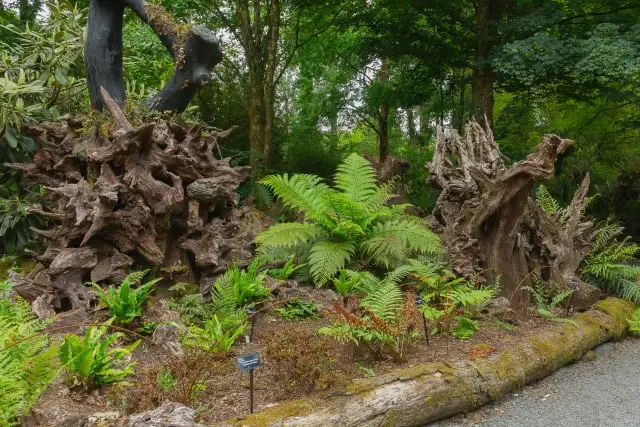
In a large plot, stumperies can be haunting places – feeling heavy with ancient spirits – but even in a more modest garden, the blend of old wood and fresh green fronds is a wonderful artistic display of tamed nature.
4. Vertical planting: climbing the walls
Another opportunity presented by epiphatic ferns, and those varieties able to thrive on minimal soil, is a vertical garden.
These artistic green screens come in many shapes and styles these days, from simple stacked containers, to elaborate designer frames with hidden pouches that can form a striking and vibrant “living wall”.
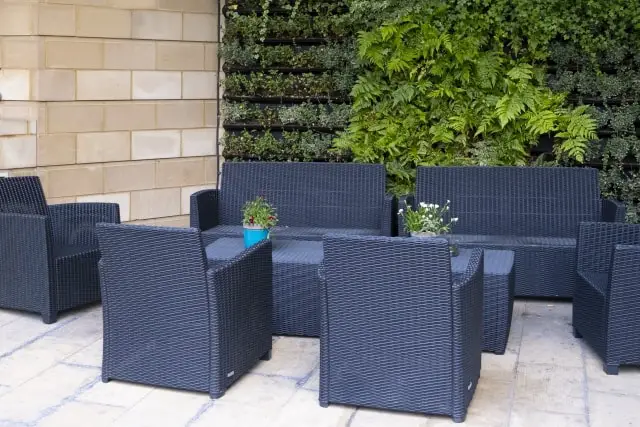
For staghorn ferns and bird’s nest ferns, it is possible to mount them directly against a board, as they will grow as they would on a tree in the wild. For other varieties, small pockets, shallow mounted containers, or even hanging pots can be used to create a wall of fronds.
Vertical planters come in many forms and materials, many of them recycled or sustainable, making them an environmentally friendly option for introducing ferns into a small space for maximum impact.
5. Underplanting: the classic complement
Finally, it is always worth remembering the gold standard use for ferns in the garden – underplanting trees or shrubs to bring color and life to shadowy ground beneath the overhanging branches.
A drift of ferns can be striking and effective for filling a border that is overhung, and when mixed in with hostas and other shade loving plants, the contrasting effect can be even more beautiful.
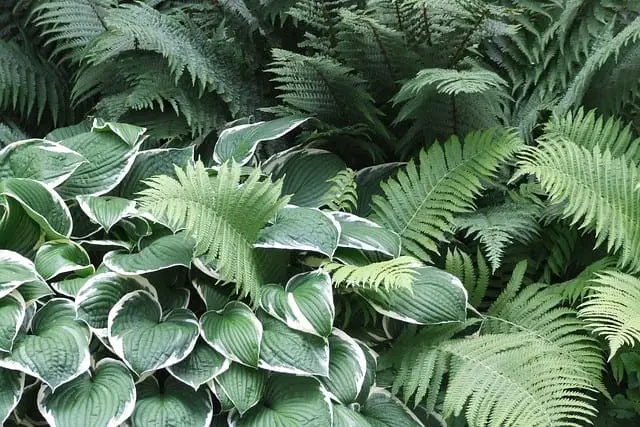
Ferns can help capture this territory that is not suitable for more sun-thirsty flowering plants, and suppress weeds that might otherwise colonize the space. Not much can thrive at the base of a tree, but ferns are tailor-made for the job.
Ferns are versatile, eye-catching and adaptable to almost any environment. The only limit to how they can be landscaped into the garden is your own imagination.
